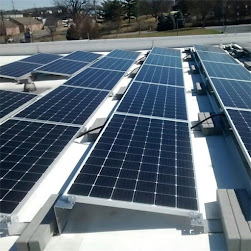The Advantages of Using Fiberglass Reinforced Plastic ( FRP) for Solar Mounting Structures
Using fiberglass reinforced plastic ( FRP) for solar mounting structures offers several advantages:
2. Lightweight: FRP is significantly lighter than traditional metal materials such as steel or aluminum. The lightweight nature of FRP makes it easier to handle during installation and reduces the overall weight load on rooftops or structures. This can be particularly advantageous for rooftop solar installations or installations on structures with weight limitations.
3. High Strength-to-Weight Ratio: Despite its lightweight nature, FRP has a high strength-to-weight ratio, meaning it offers excellent structural strength. It can withstand the loads and stresses associated with solar panel installations while maintaining its integrity and stability. The high strength-to-weight ratio also allows for longer spans between support points, reducing the number of mounting structures required.
4. Design Flexibility: FRP can be molded into various shapes and sizes, allowing for flexible and customized designs. It can be easily fabricated to accommodate specific project requirements, such as different panel sizes or mounting angles. This design flexibility enables efficient use of space and optimal orientation of solar panels for maximum energy generation.
5. Electrical Insulation: FRP is a non-conductive material, providing electrical insulation properties. This is particularly important for pole-mounted solar systems, where the structure needs to isolate the solar panels from the ground or other conducting elements. The electrical insulation of FRP helps ensure the safety and reliability of the solar installation.
6. UV Resistance: FRP is highly resistant to ultraviolet ( UV) radiation, which is present in sunlight. This UV resistance prevents degradation and color fading of the material over time, ensuring the long-term aesthetics and performance of the solar mounting structure.
7. Low Thermal Conductivity: FRP has low thermal conductivity, meaning it does not readily transfer heat. This property helps reduce thermal bridging between the solar panels and the mounting structure, minimizing energy losses and increasing the overall efficiency of the solar system.
8. Environmental Friendliness: FRP is a sustainable and environmentally friendly material. It is non-toxic, non-polluting, and can be recycled at the end of its life cycle. Choosing FRP for solar mounting structures aligns with the goal of creating a renewable and sustainable energy infrastructure.
While FRP offers several advantages, it's important to consider specific project requirements and consult with structural engineers or professionals experienced in FRP applications to ensure proper design, installation, and compatibility with the solar system.

.jpg)
.jpg)
.jpg)
评论
发表评论